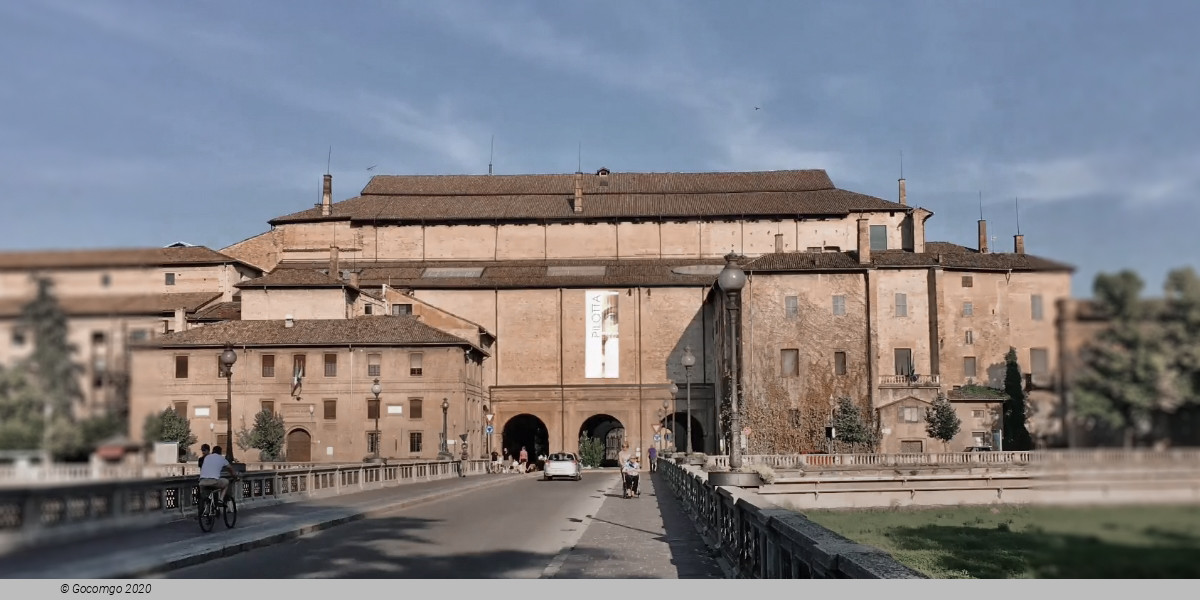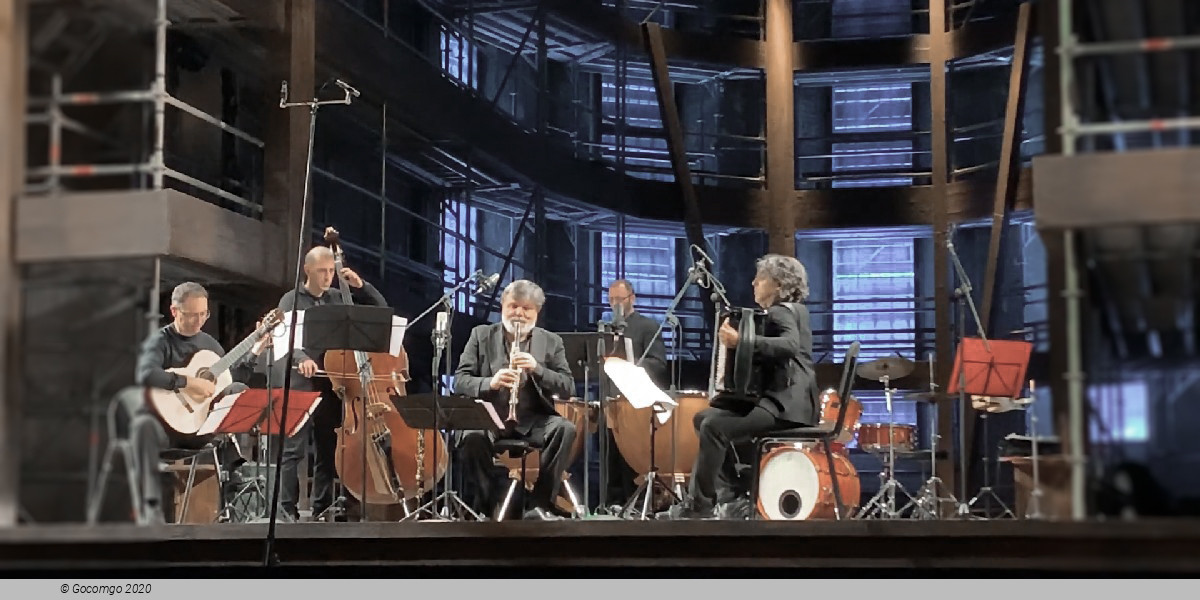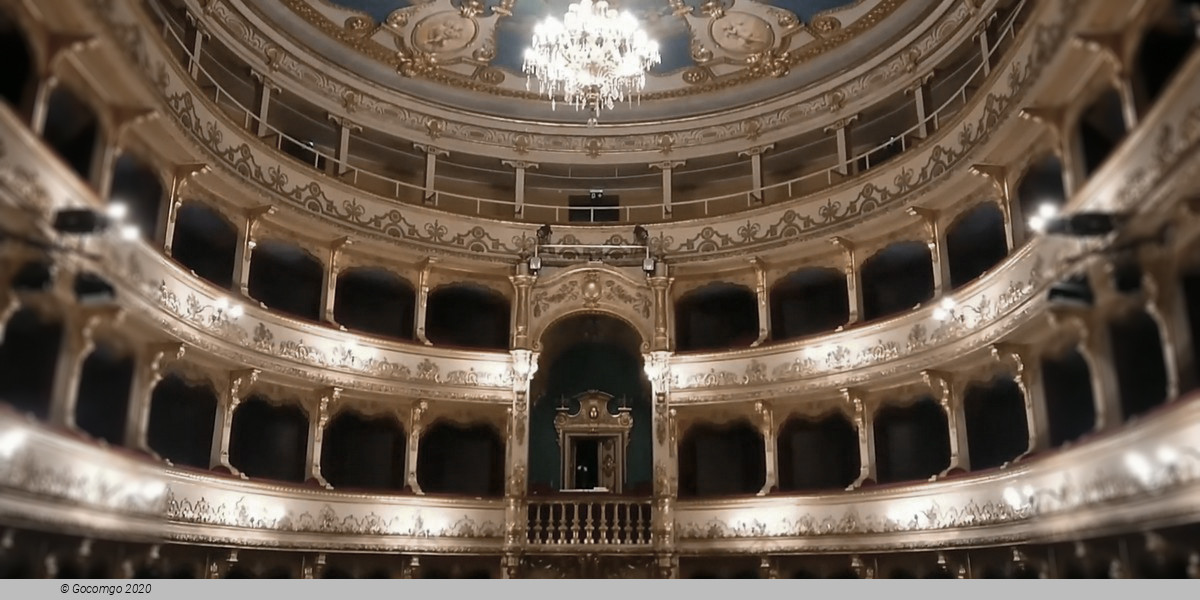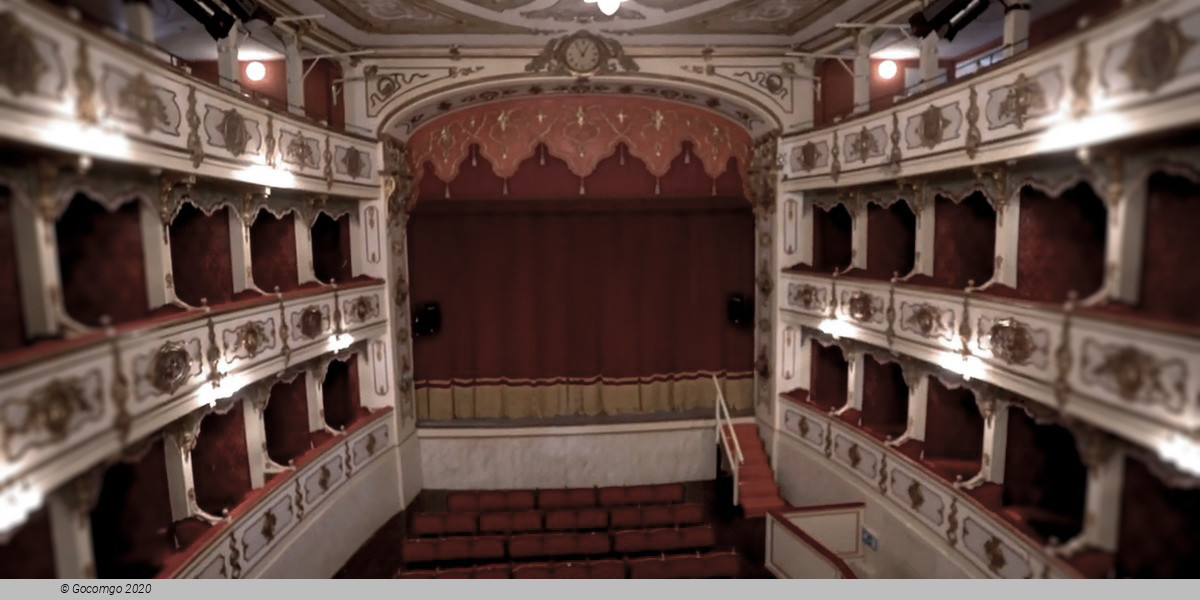Venues in Parma

Parma is a university city in the Emilia-Romagna region of Italy, famous for its Parmesan cheese and Parma ham. Romanesque buildings remain in the city centre, including the frescoed Parma Cathedral and the pink marble Baptistery. The 19th century Royal Opera House hosts classical music concerts. The National Gallery, located within the walls of the imposing Pilotta Palace, showcases the work of the painters Correggio and Canaletto.
The Gallic city of Parma in 183 BC became a Roman colony and soon became quite an important trading center. Destroyed by the soldiers of Mark Antony, it was restored by Augustus; since then, it was called, Augusto Parmensis, after the fall of the Western Roman Empire Chrysopolis ("city of gold"; in medieval Chronicles — Chrysopolis), and later again with Parma.
In 570 Parma came under the rule of the Lombards, in 774 — the Franks. In 879, Carloman year, granted Parma, with the title of the County, Bishop Wilibald.
In the eleventh, twelfth, and thirteenth centuries, Parma was the scene of a constant struggle between the Guelphs and the Ghibellines. Management of the city, nominally Republican, has been the subject of a dispute between the families of the Rossi, Pallavicino, Correggio, Sanvitale etc. In 1167 Parma entered into helpski Union of the Lombard cities. In 1248, at Parma, which was temporarily occupied by the Ghibellines, the Emperor Frederick II was utterly defeated, forced as a result to leave Italy altogether; in Parma, the rule of the Guelphs was restored.
In 1346, the Visconti captured the city and annexed it to the Duchy of Milan.
Pope Julius II annexed Parma, along with Piacenza, to the papal possessions. In 1545, Pope Paul III transferred Parma and Piacenza, with their area and with the title of Duchy, to his illegitimate son, Pietro Luigi Farnese. Two years later, the Duke of Farnese called his despotism conspiracy among the upper classes, and was killed; in Piacenza established after this, the Milanese Governor of Charles V, Gonzaga, and Parma, with the assistance of the papal troops left for Ottavio Farnese, the son of Pietro; in 1558 he returned to Piacenza, by agreement with Philip II.
Within two centuries of Parma and Piacenza lived under the rule of the Farnese dynasty the life of a small independent Italian state with a despotic rule, shining luxury of the court, according to the custom of all Italian courts patronized the development of art (even earlier cathedrals of Parma and storage of works of art was raised to a considerable height by the famous Correggio, who lived here in 1518 to 1530 years). In 1731, the Farnese dynasty ceased and Parma and Piacenza inherited (through the female line) to Infante Charles of Spain, who ceded them (1735) to the Austrian Emperor Charles VI, in exchange for the Kingdom of Both Sicilies. Moving to Naples, Charles III moved there a significant part of the values accumulated by Farnese.
In 1743, according to the peace of Aachen, Maria Theresa ceded them-along with Guastalla, which has since long been part of the same state with them, the Spanish Infante Philip. The government of the Bourbons in Parma differed little from their administration in other countries: the Inquisition flourished, thought and speech were heavily oppressed, taxes were very heavy. In 1796, Ferdinand, son, and (since 1765) the heir of Philip, left Austria during the revolutionary wars to the mercy of fate, ransomed from the French 2 000 000 lire, and the 20 best paintings from the Parma gallery, but a year later, according to campoforma peace Treaty, had to give up Cisalpine Republic his possessions on the left Bank At.
Under the Treaty between France and Spain (1801), Ferdinand's son, Louis, was made king of Etruria, with an obligation to cede France to Parma, Piacenza and Guastalla. In 1806 Napoleon gave Guastalla to his sister Pauline Borghese. Under the Treaty of Paris of 1814 and the decisions of the Congress of Vienna, Parma, Piacenza and Guastalla were transferred to Marie-Louise, Napoleon's wife, but, in view of the protests of Spain, in 1817, a special Treaty concluded in Paris, it was decided that after the death of Marie-Louise Duchies pass to the heirs of Louis, the former king of Etruria, with the exception of the territory on the left Bank of the Po, which remained behind Austria.
The administration of Marie-Louise, who was completely under Metternich's control, could not suppress the aspirations for the freedom and unity of Italy. Although the disturbances of 1831, 1833 and 1846 were suppressed by Austrian troops, the death of Marie-Louise, after which the Duchy of Parma passed to Charles II, who had until then been Duke of Lucca, caused new unrest. In 1860, the inhabitants of Parma and Piacenza decided to join the United Italy. The daughter of the last Duke of Parma married the last Emperor of Austria and lived until 1989.
The city was badly damaged by allied bombing at the end of world war II.
Main sights
Churches
Parma Cathedral: Romanesque church houses a 12th-century sculpture by Benedetto Antelami and a 16th-century fresco masterpiece by Antonio da Correggio.
Baptistery: (construction began in 1196) by Antelami, stands adjacent to the cathedral.
San Giovanni Evangelista: Abbey church originally constructed in the 10th century behind the Cathedral's apse, rebuilt in 1498 and 1510. It has a late façade and a bell tower designed by Simone Moschino. The cupola is frescoed with an influential masterpiece of the Renaissance: the Vision of St. John the Evangelist (1520–1522) by Correggio which heralded illusionistic perspective ceilings. Cloisters and library are also notable.
Sanctuary of Santa Maria della Steccata.
San Paolo, Parma: (11th century) Former Benedictine convent houses Correggio's frescoes in the Camera di San Paolo (1519–1520), and works by Alessandro Araldi.
San Francesco del Prato: (13th century) Gothic church served as jail from Napoleonic era until 1990s, during which the 16 windows in the façade were opened. The Oratory of the Concezione houses frescoes by Michelangelo Anselmi and Francesco Rondani.
Santa Croce: 12th-century church in Romanesque style, had a nave and two aisles with a semicircular apse. Rebuilt in 1415 and again in 1635–1666. The frescoes in the nave by Giovanni Maria Conti, Francesco Reti and Antonio Lombardi) date to this period.
San Sepolcro: church built in 1275 over a pre-existing religious edifice, interiors largely renovated in 1506, 1603 and finally 1701. The Baroque bell tower was built in 1616, bells completed in 1753. Adjacent is a former monastery (1493–1495) of the Regular Canons of the Lateran.
Santa Maria del Quartiere (1604–1619) church characterized by an odd hexagonal plan; cupola is decorated with frescoes by Pier Antonio Bernabei and pupils.
San Rocco: Late Baroque style church rebuilt in 1754 and dedicated to one of Parma's patron saints.
Palaces
Palazzo della Pilotta (1583): It houses the Academy of Fine Arts with artists of the School of Parma, the Palatine Library, the National Gallery, the Archaeological Museum, the Bodoni Museum and the Farnese Theatre.
Palazzo del Giardino, built from 1561 for Duke Ottavio Farnese on a design by Jacopo Barozzi da Vignola. Built on the former Sforza castle area, it was enlarged in the 17th–18th centuries. It includes the Palazzo Eucherio Sanvitale, with interesting decorations dating from the 16th centuries and attributed to Gianfrancesco d'Agrate, and a fresco by Parmigianino. Annexed is the Ducal Park also by Vignola. It was turned into a French-style garden in 1749.
Palazzo del Comune, built in 1627.
Palazzo del Governatore ("Governor's Palace"), dating from the 13th century.
Bishop's Palace (1055).
Ospedale Vecchio ("Old Hospital"), created in 1250 and later renovated in Renaissance times.
Other sites of interest
Teatro Farnese was constructed in 1618–1619 by Giovan Battista Aleotti, totally in wood. It was commissioned by Duke Ranuccio I for the visit of Cosimo I de' Medici.
Cittadella, a large fortress erected in the 16th century by order of Duke Alessandro Farnese, close to the old walls.
Pons Lapidis (also known as Roman Bridge or Theoderic's Bridge), a Roman structure in stone dating from the reign of Augustus.
The Orto Botanico di Parma is a botanical garden maintained by the University of Parma.
Teatro Regio ("Royal Theatre"), built in 1821–1829 by Nicola Bettoli. It has a Neo-Classical façade and a porch with double window order. It is the city's opera house.
The Auditorium Niccolò Paganini, designed by Renzo Piano.
The Museum House of Arturo Toscanini, where the famous musician was born.
Museo Lombardi. It exhibits a prestigious collection of art and historical items regarding Maria LuigiaHabsburg and her first husband Napoleon Bonaparte; important works and documents concerning the Duchy of Parma in the 18th and 19th centuries are also kept by the Museum.





